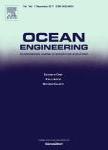版权所有:内蒙古大学图书馆 技术提供:维普资讯• 智图
内蒙古自治区呼和浩特市赛罕区大学西街235号 邮编: 010021

作者机构:Iran Univ Sci & Technol Sch Civil Engn Tehran Iran
出 版 物:《OCEAN ENGINEERING》 (海洋工程)
年 卷 期:2009年第36卷第15-16期
页 面:1175-1181页
核心收录:
学科分类:07[理学] 0707[理学-海洋科学] 0824[工学-船舶与海洋工程] 0814[工学-土木工程]
主 题:Decision trees Regression tree Model tree Neural network Significant wave height
摘 要:Prediction of wave height is of great importance in marine and coastal engineering. Soft computing tools such as artificial neural networks (ANNs) are recently used for prediction of significant wave height. However, ANNs are not as transparent as semi-empirical regression-based models. In addition, neural networks approach needs to find network parameters such as number of hidden layers and neurons by trial and error, which is time consuming. Therefore, in this work, model trees as a new soft computing method was invoked for prediction of significant wave height. The main advantage of model trees is that, compared to neural networks, they represent understandable rules. These rules can be readily expressed so that humans can understand them. The data set used for developing model trees comprises of wind and wave data gathered in Lake Superior from 6 April to 10 November 2000 and 19 April to 6 November 2001. M5 algorithm was employed for building and evaluating model trees. Training and testing data include wind speed (U-10) as the input variable and the significant wave height (H-s) as the output variable. Results indicate that error statistics of model trees and feed-forward back propagation (FFBP) ANNs were similar, while model trees was marginally more accurate. In addition, model tree shows that for wind speed above 4.7 m/s, the wave height increases nonlinearly by the wind speed. (C) 2009 Elsevier Ltd. All rights reserved.